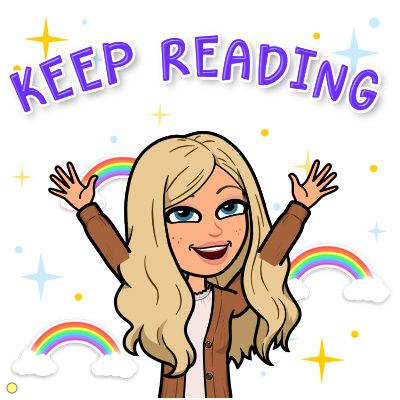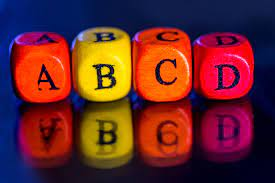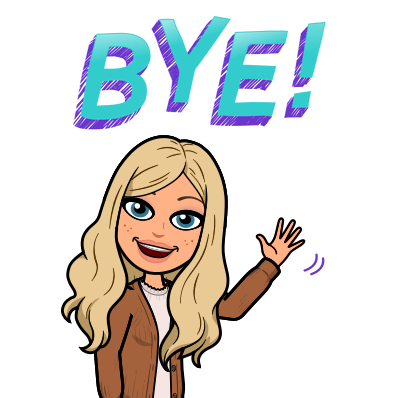Hi! Today I read chapter 4 of the textbook. Come along with me on my journey of reading chapter 4 and let's talk about what I learned!
Outcome
While reading chapter 4, I learned what the term outcome means. The outcome is the knowledge, skills and concepts that the students retain and show and it usually happens at the end of a grade for example; the end of second grade and usually when transitioning to a higher level school such as from middle school to high school.
Objective
The word objective is a statement that teachers make relating to the expected result for the student during an activity.
An example of a learning outcome for students in fourth grade could be: Students will identify explorers who came to Florida and the motivations for their expeditions. - Florida Social Studies Standards SS.4.A.3.1
The learning objective is what the students are expected to accomplish when completing an instructional activity. It is important to have a learning objective when teaching your students because it makes you think what you want your students to get out of the instructional activity.
Behavioral Objectives
What students will do and complete when instruction happens. The main focus is what students will have to complete and how students learning will be assessed. Measurable behavior is the behavior or performance that is seen during the objective.
Example: Students will compare the goals and outcomes of the expeditions of Ponce de Leon, Juan Garrido, Esteban Dorantes, and Tristan deLuna.
Domains!
Today I learned that objectives can appear in 4 different domains! They are known as, cognitive, affective, psychomotor and interpersonal.
Down below is a description of all of the domains!
| Cognitive Domain | Affective Domain |
Does the student understand the ideas and concepts that are being taught?
Can the student apply what he or she has learned appropriately to other situations?
Can the student compare what they have learned with other subjects and ideas?
Can the student create a new product or adapt an existing product based on his or her learning?
Can the student determine the worth of what they have learned and support their judgment? | Has the student had opportunities to learn the ideas and concepts in ways that are meaningful to the learner?
Has the student had opportunities to express his or her feelings about what is being learned?
Is the learning useful for the student? |
| Psychomotor Domain | Interpersonal Domain |
Can the student perform the fine and gross motor movements necessary to apply the learning?
Does the student have the perceptual skills needed to apply the learning? | Has the student had opportunities to interact positively and productively with others while learning the ideas and concepts?
Has the student had opportunities to utilize appropriate social and communication skills while learning?
Have the student had opportunities to hear what others think about what we are learning and to tell other students what he or she thinks?
|
Performance Objectives: Today I learned what performance objectives are and what they are used for. Performance objectives are used to determine the knowledge, skills and abilities of a students. Performance objectives include test items which that are made from learning objectives.
Example: The student will use information from their research to complete a graphic organizer and a map comparing the expeditions of Ponce de Leon, Juan Garrido, Esteban Dorantes, and Tristan deLuna.
ABCD MODEL
A useful way to create an objective is the ABCD model. In section 3 of the textbook, an example of the ABCD model was given. Example:
Condition – Given graphic organizer and a map
Audience – the student
Behavior – will use information from their research
Degree – is not stated but is assumed to be with 100% accuracy.
Today I learned that Bloom's Taxonomy is an example of a Cognitive Domain!
What I really found interesting was that Bloom's Taxonomy is organized in more than 1 way. It is organized into three levels of cognitions. The three levels are: lower, middle, and higher.
Lower Level Cognitive Objectives | Examples |
knowledge (recall)
comprehension (understanding)
| The students will match the names of explorers with the places they explored. In their own words, the students will give the reasons why Spanish explorers came to America. |
Middle Level Cognitive Objectives | Examples |
application
analysis
| Students will give examples of places they have explored. Students will compare Spanish explorers and conquistadors. Given characteristics of explorers, students will classify the explorer as English, French, or Spanish. |
Higher Level Cognitive Objectives | Examples |
synthesis evaluation | Students will create a Glog about an explorer. Students will write a persuasive essay justifying whether European exploration of the Americas was positive or negative and give reasons to support their position. |
The Affective Domain
What I learned during section 5 was that a teacher, you need to take into consideration how your students are feeling and acting while they are learning. Within the the Affective Domain, objectives require the attention of the students and also participation.
Levels of Affective Objectives | Examples |
receiving responding valuing | Students will actively listen to a NASA presentation on reasons for exploring space. Students will tell whether they think tax dollars should be spent on space exploration or on relieving hunger. Students will choose to find out more about earth and space explorers by visiting web sites such as NASA, National Geographic Kids, and Space Kids. |
The Psychomotor Domain
What I found interesting was that Psychomotor objectives are related to movement or skills. Within these objectives are physical education, arts, vocational technical training, special education, physical skills or motor skill activity. Psychomotor objectives are important for young children.
Here are the Psychomotor objectives:
Psychomotor Objectives | Examples |
basic movements
perceptual abilities
physical abilities
skilled movements
non-discursive communication
| Students will walk quietly in a line to the lunchroom. Students will hear a musical note and point to that note on a musical scale. Students will run around the gym two times in one minute. Students will be able to throw a baseball using the correct technique. Students will portray a body stance and facial expression that indicates sadness. |
Interpersonal Objectives:
While reading section 7, I learned that students should have many opportunities to work with their classmates and they should all contribute to a groups work and success. The main goal of Interpersonal objectives is that students should practice social skills and communication skills. Interpersonal skills are most effective when students observe the skills. They need to practice their skills and receive input on their skills from their peers and teacher.
Examples of Social Skills | Examples of Communication Skills |
Being kind
Being respectful
Saying please and thank you
Staying on task
Encouraging others
Disagreeing constructively
Making eye contact with others
Making sure everyone is included
Keeping hands and feet controlled | Actively listening to others
Using appropriate voice levels
Positive nonverbal behaviors
Asking questions
Clarifying instructions
Repeating ideas of others
Brainstorming ideas
Giving reasons for ideas and feelings
Identifying areas of agreement |
Interpersonal Objectives | Examples |
social skills
communication skills
conflict management | Students will contribute ideas to help the group complete its task. Students will use six inch voices when communicating with other members of their group. Students will role play effective and ineffective ways of disagreeing with other group members.
|
Section 8
Task analysis can help figure out how effective the learning experience is for students. Task analysis can be useful when creating a workable sequence of learning objectives when creating a unit plan because it allows the teacher to gain an idea about the knowledge of his or her students which can help them figure out where to go from there in order for the students to work productively on the objectives. Within task analysis, the teacher will identify the new learning which needs to happen in order for the students to achieve the instructional objective. The teacher sequences the new learning in order for the students to master it.
Section 9
Section 9 of chapter 4 talked about The Anticipatory set. The anticipatory set is the beginning of the instructional process and it really centers on what the students are going to learn about. An Anticipatory set can be on safety, behavior, review practice and even a "hook" to begin the lesson with! I think that this can be beneficial because it will result in a higher engagement of the students and it will make them more interested.
Section 10
I can modify my teachings to my diverse students by incorporating tired assignments. Tiered assignments involve assignments based on what my students are read for based on their knowledge and skills. Tiered assignments also allow students to gain background knowledge on what they are not familiar with.














